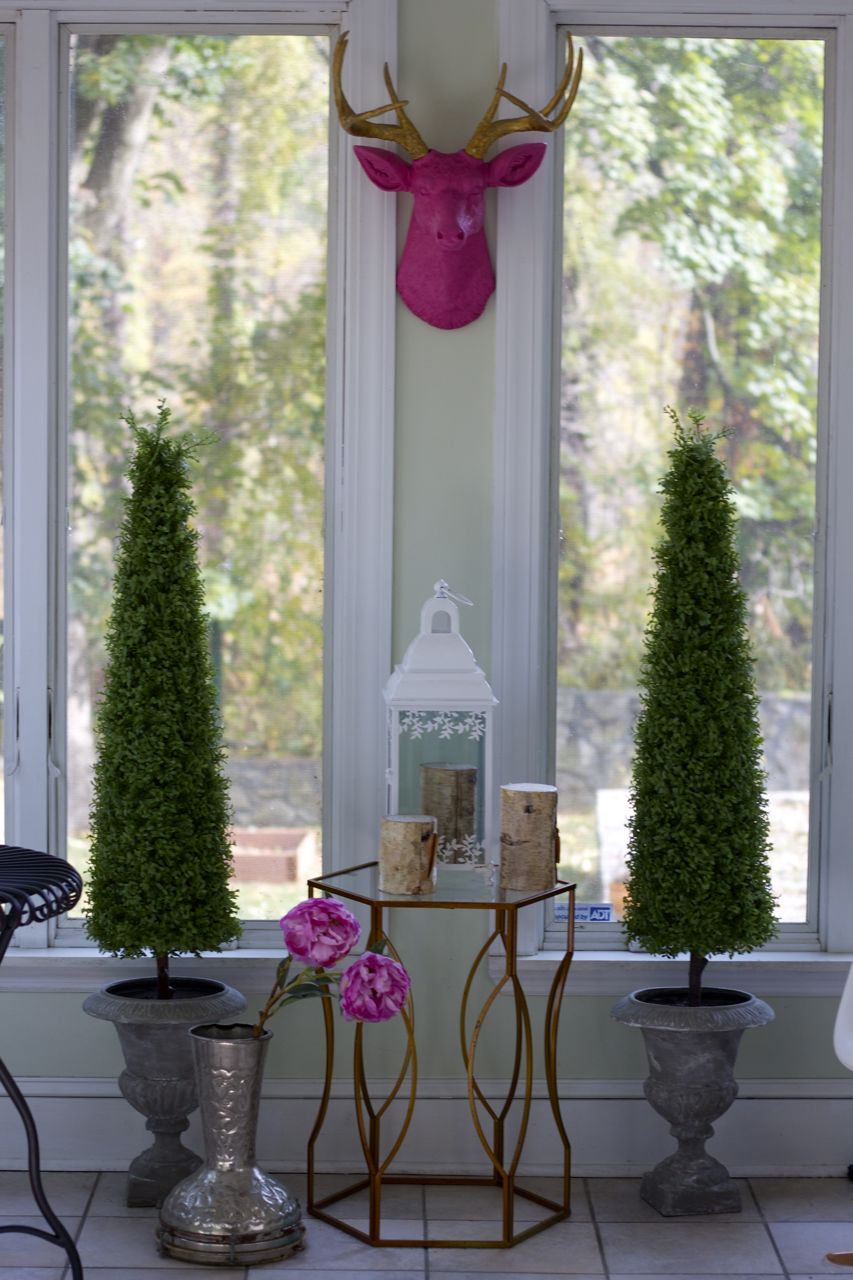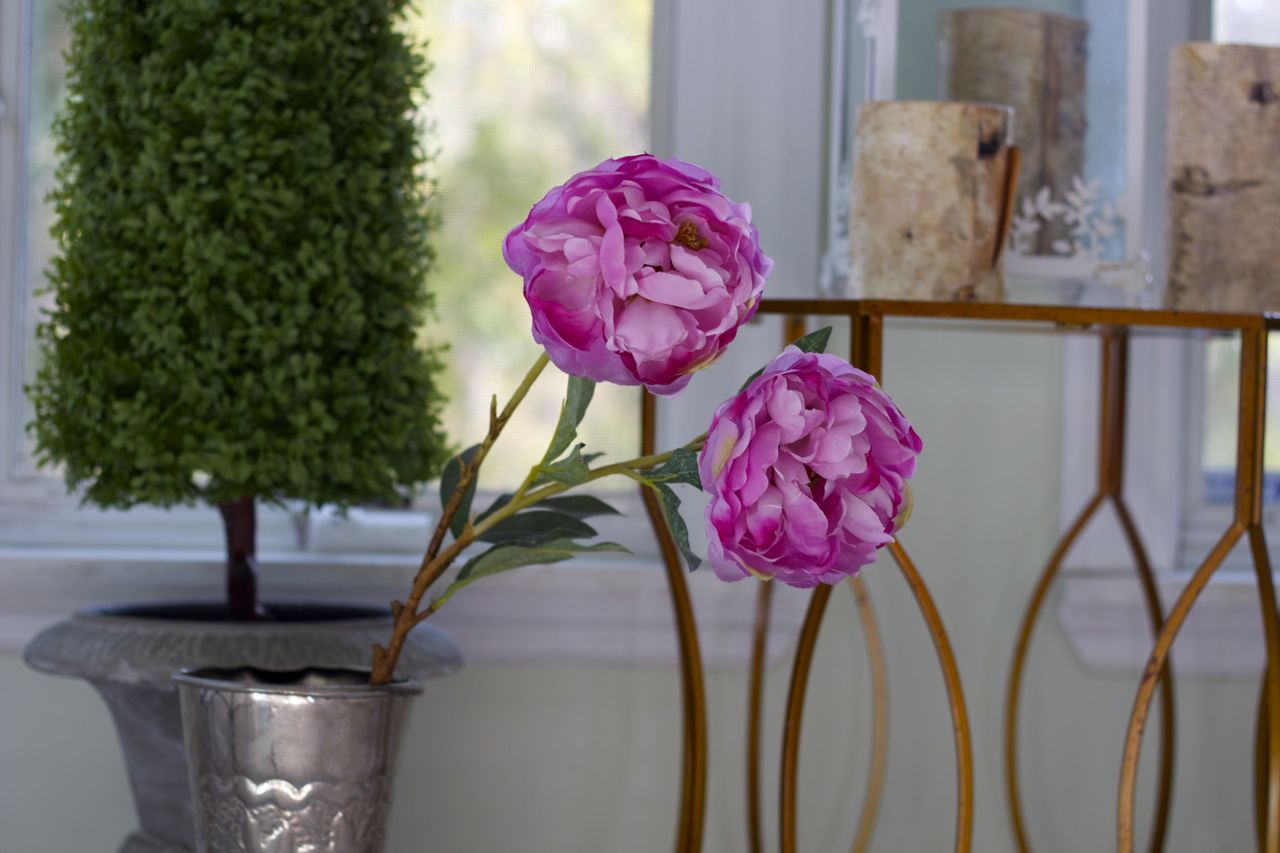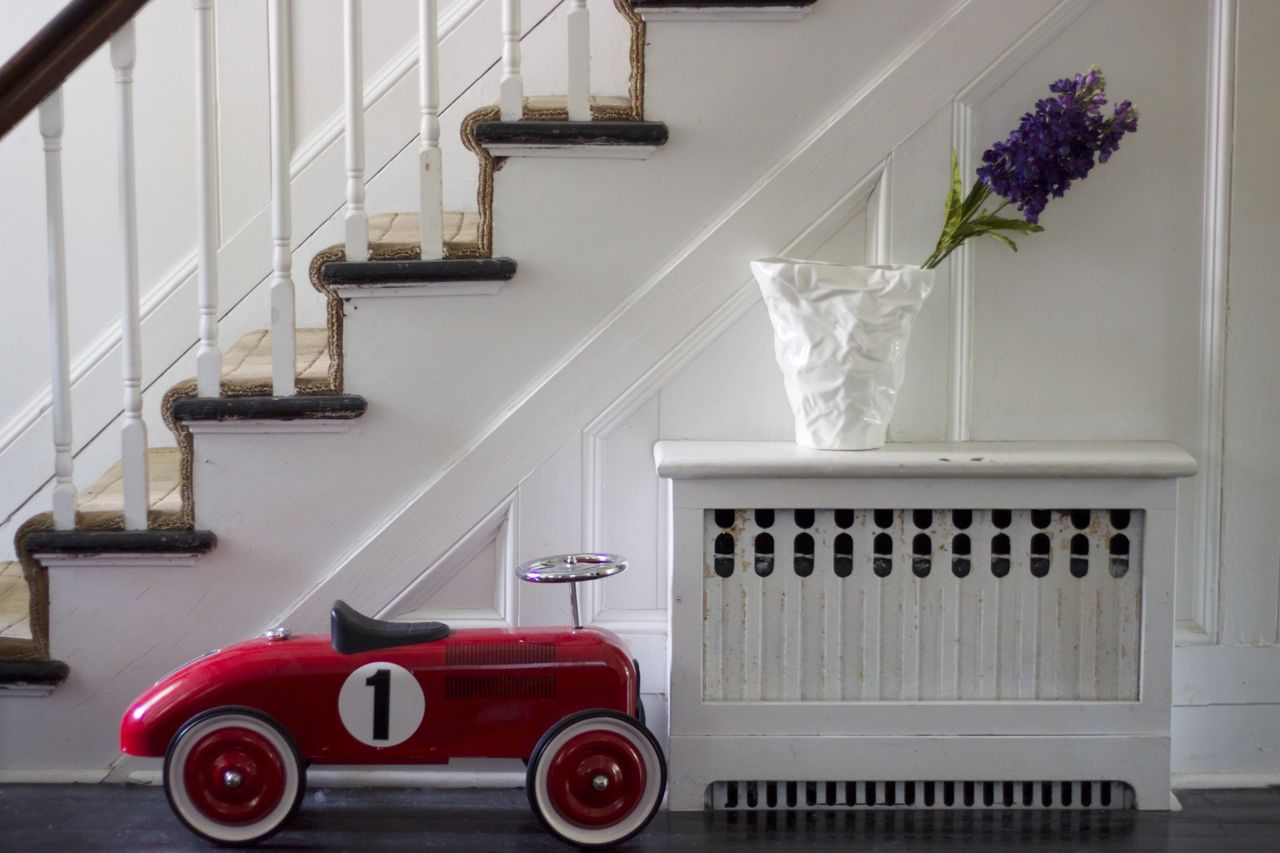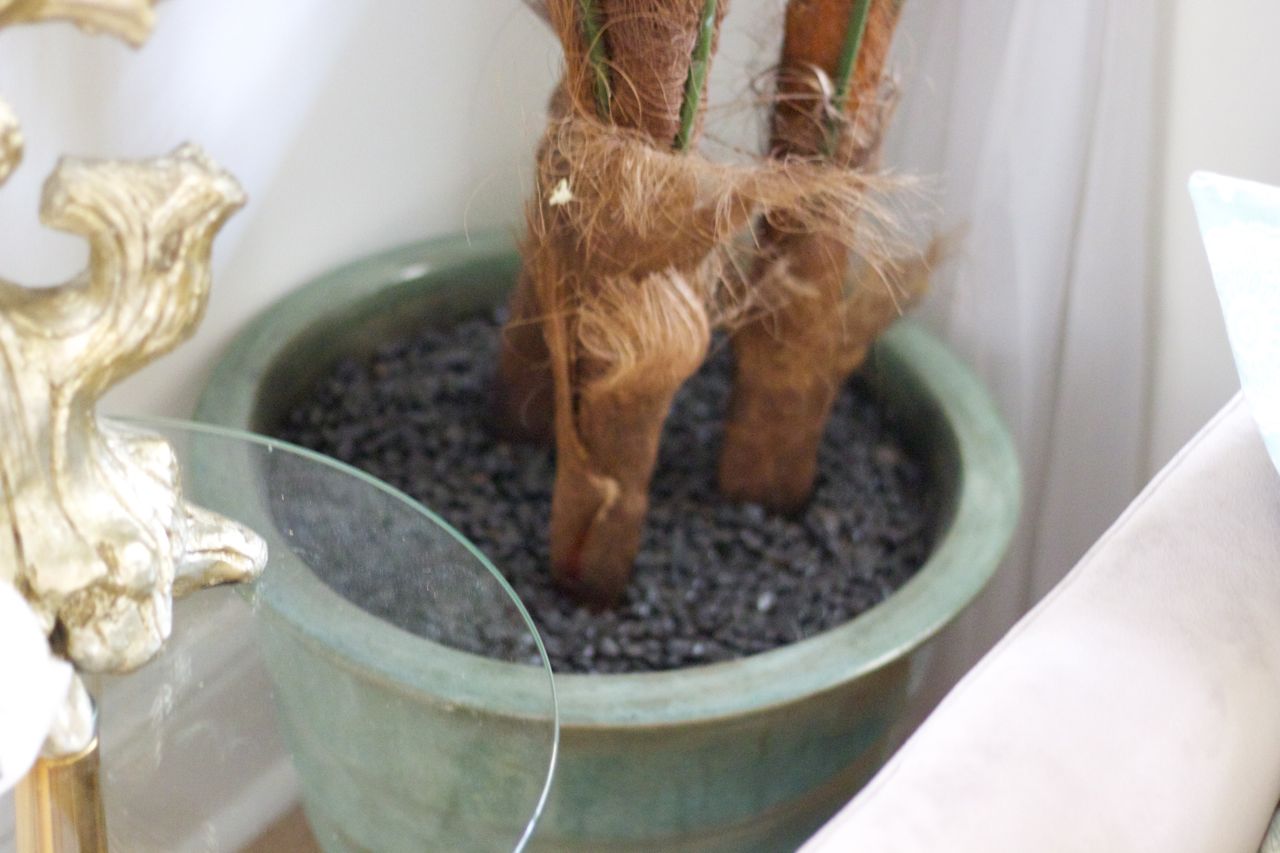
Q. Hi Jordan,
How do you pick artificial plants and flowers that look realistic? I want to personalize my room, [and] I thought some faux greenery might give it a lift.
-Jeannine
A. Oh, did you ever come to the right girl for this one.
I LOVE faux flowers. As you can probably tell.
Mostly because while I really do think that every single room in your home can benefit a ton from the addition of some greenery to make things feel fresh and vibrant, I cannot keep an actual plant alive for the life of me (not one that’s in my house, anyway; the ones in my garden seem to be doing OK).
What I’ve found is that, alas, price often really does make a difference when it comes to faux florals – both flowers and trees. But trust me, they’re worth the investment…because when you find truly beautiful ones, you’ll hold on to them forever. I’ve owned the peonies pictured above (which I found for about $10/stem at Laytern’s Linen) for a good four years now, and they still look more or less like they did the day I brought them home.
When buying faux flowers, look for:
– Natural-textured petals that vary in color (a solid color throughout can look fake).
– Stems that have wire in them (so that you can twist them to make them look more realistic) and are different lengths; it’s the variety that makes them look natural.
– Details on the stems – little knobs, leaves, anything that makes them look like they came straight out of the garden.
– Major impact – as you can see, I love the effect of just two or three really spectacular single blooms in an interesting vase; I think it adds color and life to a space while still feeling un-fussy and modern.
Faux trees are another place you’ll want to make an investment…but I’ve found lots of amazing ones for far less than full price at HomeGoods (where I bought the plant that’s pictured above with my ridiculous dog, as well as the two topiaries in stone urns sitting in my sun room). What I look for are trees that appear so lifelike that I actually have to touch them to figure out whether or not they’re faux…so if you’re not certain about a particular vendor, this is a purchase that you might want to make in person.
Topiaries can be a little easier to buy online; because their leaves are small and densely packed and their shape is decidedly man-made, faux versions tend to look very similar to the real thing. With topiaries, you’ll want to look for stunning pots or urns (that’s part of their appeal). Remember that they can get pricey, but that their striking shape can add so much interest to a space (particularly if you use them to frame a window or an entryway) that they’re often worth the extra cost.
When buying faux trees, look for:
– Leaves and trunks with unique, “imperfect” elements (see how the base of the one in my living room has all those natural fibers coming out?)
– Natural-looking beds: if the filler in the pot looks fake or boring, try covering it with some river rocks or gravel.
– Interesting pots: rather than the black one that the tree came in, swap in a gorgeous ceramic or stone urn in a color that fits your decor.
– Faux succulents (like aloe plants) are a great option as well; just look for ones with lots of leaves, a matte finish and a beautiful container.
– Quality Silks (I think these Birds of Paradise are especially cool)
– AFloral.com (these hydrangeas are similar to the ones I have in a tall black-and-white vase in my bedroom)
– Diane James Home (this single peony would be incredible in an all-white room)
– Nearly Natural (I especially like their wide range of silk trees, although you’ll probably want to purchase your own pot)
– Horchow (pricey – but stunning and very high-quality – arrangements in unique vessels; I’m obsessed with this lemon tree)
– Michaels (with the caveat that I while I love Michaels, I haven’t actually been blown away by the quality of their faux flowers; I’d go there in person so that I could feel the petals for myself before buying)









